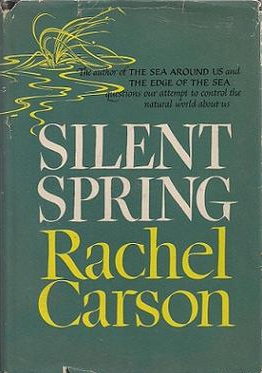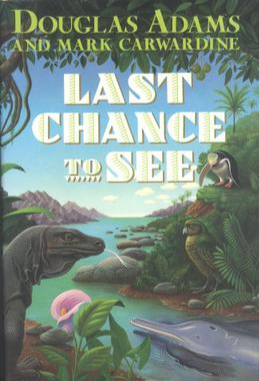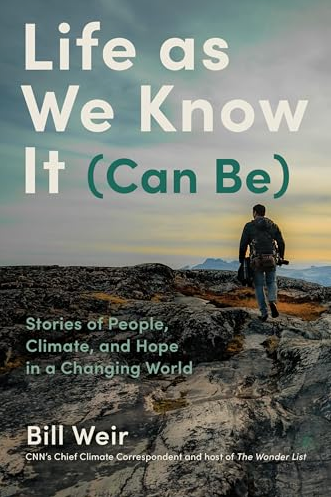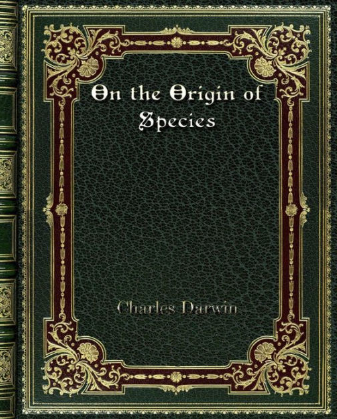Climate Action
5 Books to Read to Save the Planet
April 23, 2024
April 23rd is International Book Day, so there’s never been a better time to read the books that champion planet Earth.
Here’s EARTHDAY.ORG’s 2024 eclectic list of the books we love. Some of them inspire action, some make us think about the world in a different way, some had a massive impact, and some are just fantastic reads. So, grab a mug of tea and settle down…
1. Silent Spring (1962) by Rachel Carson

Rachel Carson’s Silent Spring was published in 1962, and it is hard to overestimate the impact of this truly seminal book.
Carson had risen through the ranks to become the editor-in-chief of all U.S. Fish and Wildlife Service publications and published two very well received books, The Sea Around Us in 1951 and The Edge of the Sea in 1956.
But she left her job to focus all her efforts on writing her third book, which would become Silent Spring.
Carson painstakingly documented the science and impact of agricultural pesticides and insecticides on wildlife and argued that we needed to recognize the harm they were causing. Carson made the point, that we were facing the possibility of a Spring would one day fall silent because the insect, and bird populations, would be decimated by the chemicals we were pouring onto the land.
Her book was an instant sensation and President John F. Kennedy himself read it. Carson redefined our relationship with the planet and the natural world, empathizing the idea that we are custodians of this planet.
The book would instigate the banning of the insecticide DDT, and Carson is one of the most important figures in the environmental movement — perhaps the mother of it. So much of what she said back then could be applied to the plastic industry today.
…we have allowed these chemicals to be used with little or no advance investigation of their effect on soil, water, wildlife, and man himself. Future generations are unlikely to condone our lack of prudent concern for the integrity of the natural world that supports all life.
Rachel Carson, Silent Spring
2. Last Chance to See (1990) by Douglas Adams and Mark Carwardine

Adams is most famous for writing the multi-million selling book series, The Hitchhiker’s Guide to the Galaxy and Carwardine is and was a respected zoologist. The two strangers met in Mauritius in 1985 on an assignment for The Observer newspaper, to write about the Aye Aye, the world’s rarest nocturnal lemur.
The men bonded so well they decided to continue their adventures and track down other endangered animals, hence the name of their resulting book, published in 1990, Last Chance to See. It is a deeply funny, moving, and poignant read that, while capturing the madness of what they pursued, also highlighted the plight of species on the brink of extinction.
Some of the animals they saw did not survive in the wild, like the Northern White Rhino, but some species did survive. A few, like the Rodrigues Fruit Bat from Mauritius, have even seen their numbers rise from 100 to 3,000.
Adams, sadly died of a heart attack in 2001. No matter your point of view about the world and man’s role in it, this book is worth reading.
For instance, on the planet Earth, man had always assumed that he was more intelligent than dolphins because he had achieved so much — the wheel, New York, wars and so on — whilst all the dolphins had ever done was muck about in the water having a good time. But conversely, the dolphins had always believed that they were far more intelligent than man — for precisely the same reasons.
Douglas Adams, The Hitchhiker’s Guide to the Galaxy
3. The Lorax (1971) by Dr. Seuss
The Lorax was published in 1971, just a year after the very first Earth Day.
There’s something magical about a creature that declares its entire existence is to guard Truffula trees. But it is perhaps even more remarkable that Dr Seuss — real name Theodor Seuss Geisel — wrote this inspiring book in just 90 minutes while on a trip to Kenya to watch elephants.
The Lorax is a small, increasingly desperate little soul trying to battle a voracious industry that will only be content to see every Truffula felled. The Lorax begs an uncaring public to help him, but it is only as the Truffula’s near extinction that people wake up to a world without them.
At the time the book was not hugely popular, but as the conservation movement grew and Lady Bird Johnson, started to name-check the Lorax — it took off. It would go on to sell over 1 million copies and perhaps is more relevant today than it was 50 years ago.
I am the Lorax. I speak for the trees. I speak for the trees, for the trees have no tongues.
Dr. seuss, The Lorax
4. Life as We Know It (Can Be) (2024) by Bill Weir

Bill Weir’s Life As We Know It (Can Be), published in 2024, started its genesis as a series of letters written on Earth Day to his baby son River, but slowly morphed into a full-blown book.
As CNN’s Chief Climate Correspondent, Weir has travelled the globe witnessing firsthand mankind’s impact on the planet, from hurricanes to wildfires to melting ice caps but in this lyrical book, while not shying away from the losers in this changing landscape – he found the great adaptors too. All of us need some hope, sometimes and this book brings it.
Life as We Know It (Can Be) is a clear-eyed, heartfelt argument against despair. It is also a kind of instruction manual for how to live in an age of so much loss.
Jonathan Safran Foer, Award-winning and New York Times-bestselling Author of Everything Is Illuminated
5. On the Origin of Species (1859) by Charles Darwin

Widely considered the foundation of evolutionary biology, it’s impossible to overstate the importance of this book. Darwin made the ground-breaking observation that population of species evolve over time through a process of natural selection. Individual creatures inherit different traits and those that possess traits that make them more suited to their environment and therefore able to breed, passing these traits on to their own offspring. Over time, this allows species to evolve, even into new species.
The most incredible thing to remember about Darwin that he wrote this it in a world that did not know about DNA, the mechanism that makes natural selection possible. It’s also, at times almost poetic.
It is not the strongest of the species that survives, not the most intelligent that survives. It is the one that is the most adaptable to change.
Prof. Leon C. Megginson, Louisiana State University at Baton Rouge
